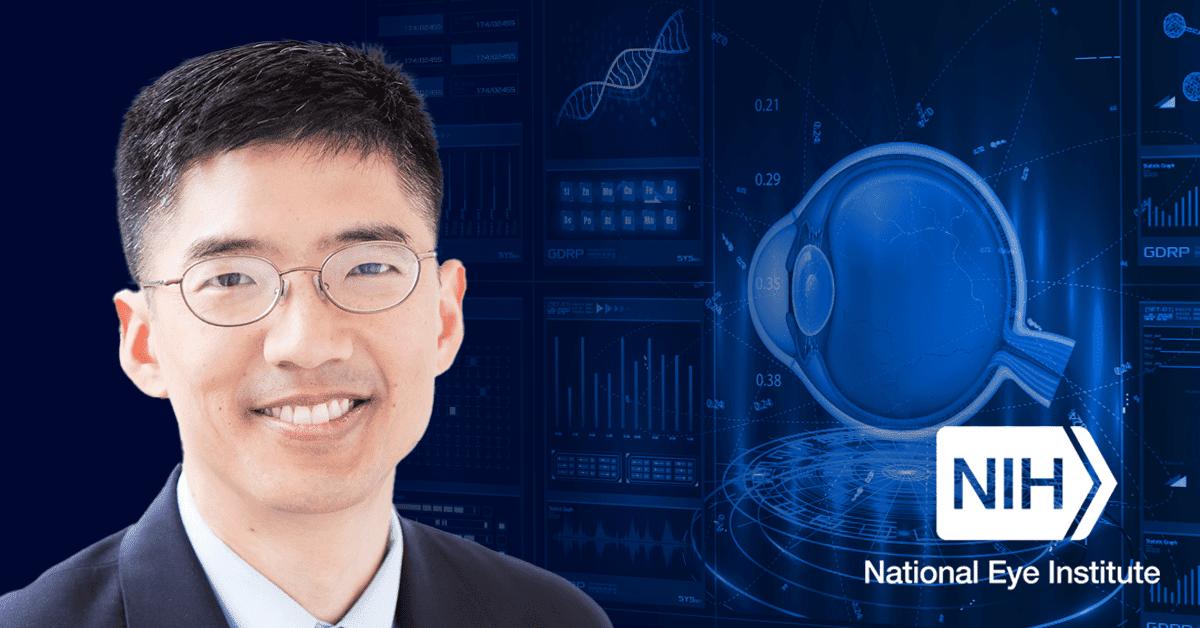Biomedical Informatics Helps Focus Director Dr. Michael Chiang’s Vision for NEI

Michael F. Chiang, MD, who took over as director of the National Eye Institute at the close of 2020, brings a unique background as an innovator in biomedical informatics to the post. A pediatric ophthalmologist with a degree in electrical engineering and biology (from Harvard no less), he’s been at the forefront of translating his work in biomedical informatics into the clinic.
For the past 20 years he honed his chops in biomedical informatics first as a professor of ophthalmology and biomedical Informatics at Columbia University, and for the past 10 years as a professor of ophthalmology, medical informatics and clinical epidemiology and associate director of the Casey Eye Institute at Oregon Health & Science University, Portland.
He’s also held leadership roles in organized medicine, having served as past chair of the American Academy of Ophthalmology Medical Information Technology Committee and as an at-large member of the AAO Board of Trustees. He’s been a member of the AAO IRIS (Intelligent Research in Sight) Registry Executive Committee and chair of the AAO IRIS Registry Data Analytics Committee.
“Dr. Chiang brings extensive experience as a clinician, researcher and educator to NIH,” National Institutes of Health director Francis S. Collins, MD, PhD, said last year when announcing Dr. Chiang’s appointment. “His work in biomedical informatics and telehealth research are particularly important for the future of vision research.”
Serving Varied Constituencies
Dr. Chiang acknowledged in an interview that he has a broad palette of constituencies to serve at NEI. “Of course, they’re going to be groups like vision researchers, clinicians, different patient organizations, so many other stakeholders if you will,” he said, “but ultimately the American public is our primary constituency.”
He noted that the overall goal is to develop treatments that improve vision, eliminate causes of preventable blindness, and improve quality of life. “I see one of my jobs as trying to be a good steward of those tax dollars that are entrusted to us,” he said. The NEI’s 2020 fiscal year budget is $835 million.
He has a firm grasp on the role biomedical informatics will have in research going forward. Just last week the NEI announced the establishment of NEI Data Commons that gives researchers access to data on thousands of patients who participated in the Age-related Eye Disease Study 2 (AREDS2). “Providing clinical data through the NEI Data Commons will help us expand the utility of our clinical trial data and streamline research,” said Kerry Goetz, administrator of NEI Data Commons. “Our system is user-friendly and requires no extensive coding knowledge.”
Traditional hypothesis-driven research, said Dr. Chiang, is “never going to go away.” He added, “What we’re talking about here is how big data and data analytics are going to change that, or how it’s going to evolve that.” That’s been a focus of his career.
“What’s the interface between technology and healthcare?” Dr. Chiang stated. “How do we use data and information to ultimately improve patient outcomes?”
Changing ‘The Way We Do Science’
Scientific computing, data science, big data, and artificial intelligence not only have the potential to change the delivery of eye care, but also, in his words, “the way that we do science.”
“For example,” Dr. Chiang explained, “biological research and genetic research are increasingly based on large-scale databases, and we’ve increasingly got paradigms where we’re seeing hypothesis generation research that’s being done using large-scale biological data sets; they can be genetic-sequence databases or protein-structure databases.
“In follow-up to that, we’re seeing a sort of rapid iterative validation studies that are being done sometimes in silico and sometimes in small clinical studies that then lead to targeted hypothesis-driven research in that classic way,” he said. “There’s a lot of potential for innovation ranging from basic science all the way to clinical research, ultimately leading to improvements in patient care.”
NEI is in the midst of a strategic-planning process to identify its research priorities for the next five years. The approach is based on methodologies – such as genetics, neuroscience, immunology, data science – -not necessarily anatomy of the eye – that is, cataract, retina, surface disease, and the like.
“What I’m hoping is that we can take both a disease- and anatomic-focused approach and also a cross-cutting methodological approach and really find the best ways that those approaches can complement each other,” Dr. Chiang said.
